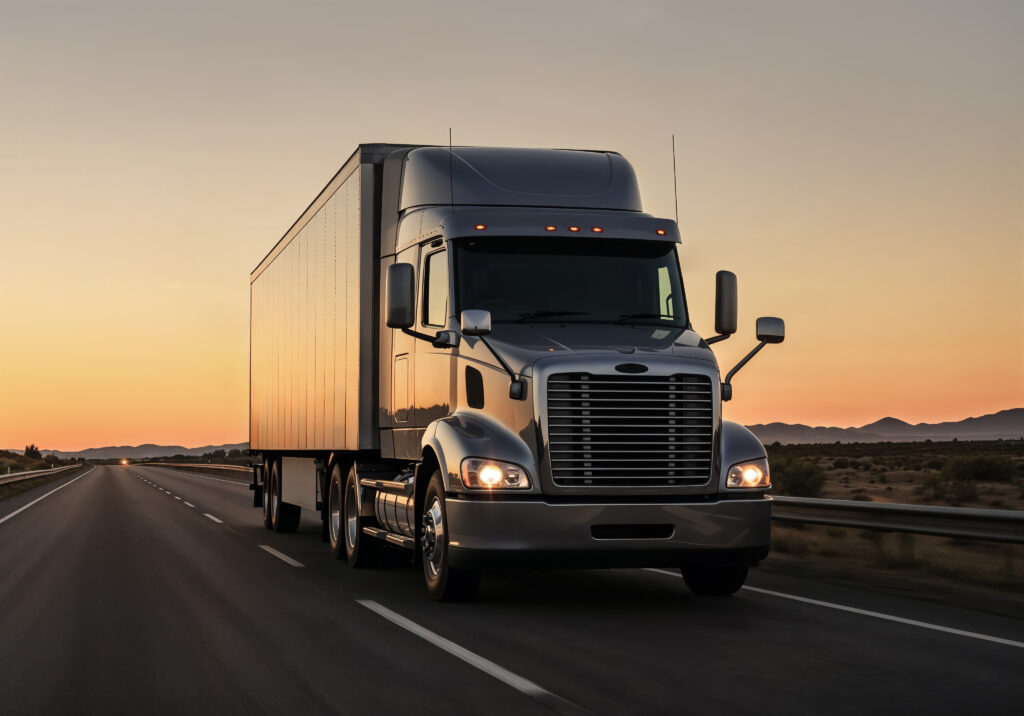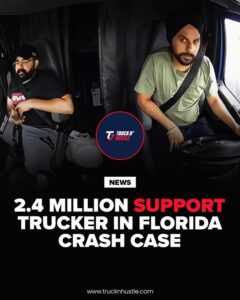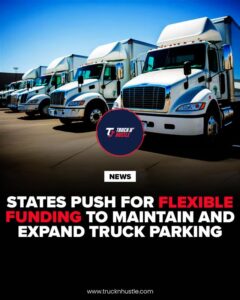Most people think of FedEx routes or Amazon delivery contracts when they hear the phrase “routes for sale.” However, there is another area of the trucking and logistics industry that is rapidly growing without anyone noticing: Bread delivery routes.
Although not extremely well-known, these companies possess substantial financial resources, are recession-proof, and generate significant revenue. Indeed, there are bread routes that regularly generate 50–80% profit margins, which are nearly unheard of in the transportation industry. The worst part is that because bakeries and sellers themselves are willing to finance their purchases, you can frequently purchase routes with no down payment.
This blog post will explain how bread routes operate, why they’re so lucrative, how to purchase them, and why they might be the next big turnkey trucking company.
What Bread Routes Really Are And Why They’re For Sale
Fundamentally, a bread route is a designated area where you deliver baked products, such as tortillas, buns, bagels, sandwich bread, or snack cakes, to well-known retail establishments like Walmart, Kroger, Target, convenience stores, and local grocery chains.
In contrast to conventional freight trucking, you are not concerned with freight brokers or prospecting clients. You are only responsible for completing pre-arranged orders and keeping shelves stocked; the bakery controls the store relationship.
Why are these routes up for sale, then?
· After operating high-performing routes for many years, many operators are retiring.
· Some wish to cash out and invest their money into bigger ventures.
· Some merely wish to offload management stress and sell off certain territories.
For the buyer, that means entering a company with accounts guaranteed from the start. Demand is already there and waiting for you; you don’t need to “build” it.
How Bread Routes Make 80% Profit With Built-In Customers
One of the most startling facts is how profitable these companies are. Bread routes are notable in an industry where trucking margins are extremely thin (usually between 5 and 15%), with margins ranging from 60% to 80% if you operate them yourself and still about 50% if you hire drivers.
Why do bread routes yield such high profits?
A. Low Overhead: The only expenses are for truck fuel, minor upkeep, and perhaps a driver’s salary.
B. Minimal Risk: There are no chasing loads or changes in freight rates. Orders remain steady and reliable.
C. Demand is Assured: Bread is a staple food, and weekly consumption hardly ever fluctuates.
D. Bakeries’ Direct Payments: Weekly payments to operators generate a healthy cash flow.
Because of this, bread routes are a unique kind of logistics passive income. Customers are included in the contract already, so you’re not in a competition for them.
The $35 Billion Bread Industry is growing 3-5% Every Year.
Although bread may not seem like a particularly exciting product, the U.S. bread market is valued at over $35 billion and is expanding at a rate of 3–5% per year.
This is the reason:
A. Staple Category: Bread has been a staple in American homes for more than a century. Every day, people consume sandwiches, burgers, bagels, toast, and wraps.
B. Demand That Is Recession-Proof: Bread is still an inexpensive necessity even in times of financial hardship. It is not deducted from family budgets like luxury goods are.
C. Innovation and New Lines: More deliveries per route will result from bakeries introducing artisanal, gluten-free, organic, and keto-friendly lines.
Bread delivery routes are among the safest long-term logistics investments due to the stability of the industry. Bread contractors enjoy consistent profits and predictable growth, while the freight industry seeks out high-risk contracts.
How To Buy A Bread Route With No Money Down
Most entrepreneurs are surprised to learn that you can frequently purchase bread routes with no down payment. The bakeries themselves frequently finance purchases, in contrast to other trucking companies that need banks or investors. Why? Because they want qualified operators to succeed, and they think the model is strong.
Among your choices are:
A. Seller Financing: Retiring owners frequently provide direct financing to purchasers, allowing you to make payments over time.
B. Bakery Financing: Because they are aware that the accounts are pre-existing, some bakeries give new route owners credit.
C. Conventional Bank or SBA Loans: Unlike erratic trucking startups, banks view these companies as low-risk loans since they have a demonstrated cash flow.
D. Private Transactions: Owners of depots frequently offer off-market routes for sale at a discount, particularly if they’re trying to get out quickly.
Bread route is one of the quickest routes to logistics entrepreneurship, with the first contact to operating your route taking as little as three months.
What Daily Life Looks Like For A Bread Route Owner
The flexibility of the business model is a key benefit of owning a bread delivery route. Depending on your objectives, there are various ways to run it:
A. Hands-on Operator: A lot of truck owners operate their vehicles themselves, beginning at around two in the morning, delivering until ten in the morning, and then wrapping up the day. Since you aren’t paying a driver, this is the model with the highest profit margin.
B. Semi-Absentee Owner: You can treat it as a turnkey business, hire drivers, and manage scheduling, compliance, and payroll if you’d prefer not to operate a vehicle.
C. Growth-Focused Investor: Some business owners expand to five, ten, or even twenty routes, managing a group of drivers while concentrating on management and acquisitions.
The daily routine is comparatively low-stress. Vehicles last longer due to short mileage and less wear and tear, routes are local (so there is no long-haul fatigue), and traffic is avoided by running overnight or early in the morning.
Trucks, Costs, And The Real Investment Behind Bread Routes
In contrast to the trucking industry, where a Class 8 truck can cost over $150K, bread contractors use box trucks or smaller step vans.
A. Used Trucks: Usually between $20K and $25K, frequently financed rather than paid for in full.
B. New Trucks: New trucks cost about $75K, but most contractors choose to buy used trucks because they last for years with low mileage.
C. Maintenance: Because routes travel short distances during off-peak hours, maintenance is minimal.
D. Accident Risk: Since most deliveries take place between 2 and 10 a.m., when the roads are empty, the accident risk is extremely low when compared to OTR.
This implies that compared to traditional trucking, your initial investment is substantially lower and your profitability is significantly higher.
Ongoing Support, Training, And Mentorship After You Buy
The support system surrounding new business owners is a major factor in their success. The biggest brokerage and advisory company in the industry, Route Consultant, offers:
A. Resources for Education: How to scale operations, hire drivers, and value a route.
B. Training Programs: Detailed instructions for operating profitable routes.
C. Community and Mentorship: Owners can learn from veterans through live summits, expos, and regular group calls.
D. Check-ins Every Three Months: Making sure owners maintain their growth and compliance plans.
As a result, the guesswork is removed. The road map is laid out, even if you’re completely new to logistics, which will help you avoid expensive errors and boost profitability.
The Biggest Misconceptions About Bread Route Businesses
Like any specialized field, bread routes are subject to misconceptions, frequently from those who have never operated one. Let’s correct the record:
A. “Bread routes are not businesses; they are just jobs.”
The truth is that you can hire drivers, take a backseat, and manage it similarly to a trucking business that generates passive income. Some owners oversee more than ten routes without ever operating a vehicle.
B. “Margins aren’t that high.”
The truth is that, depending on the structure, several operators confirmed margins ranging from 50 to 80%. This is a game-changer in contrast to the meagre profits in freight hauling.
C. “Bread routes cannot be scaled.”
The truth is that, by acquiring more territories, several owners have expanded their companies into multimillion-dollar enterprises.
D. “You need experience in transportation.”
The truth is that Route Consultant has trained hundreds of owners with no prior knowledge of logistics; success hinges more on adhering to the tried-and-true system.
Why Bread Routes Can Build Generational Wealth
The idea that bread routes are intended to generate wealth for future generations is the most compelling argument.
A. These are turnkey companies with a customer guarantee.
B. Over time, they generate a substantial weekly cash flow that compounds.
C. Owners have the option to scale or sell them, allowing them to expand or retire.
D. They can be operated as family enterprises or be inherited by children, generating wealth for future generations.
The beauty of bread lies in its simplicity. Bread contractors are quietly creating long-term wealth in a field that will never go away, while others are chasing erratic freight markets.
Conclusion
Bread delivery routes might be the best-kept secret in logistics if you’re a fleet owner seeking stability, an owner-operator fed up with fluctuating freight rates, or a new businessperson in need of a tried-and-true plan.









